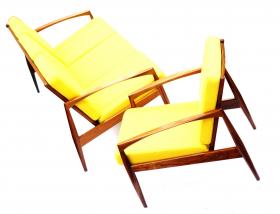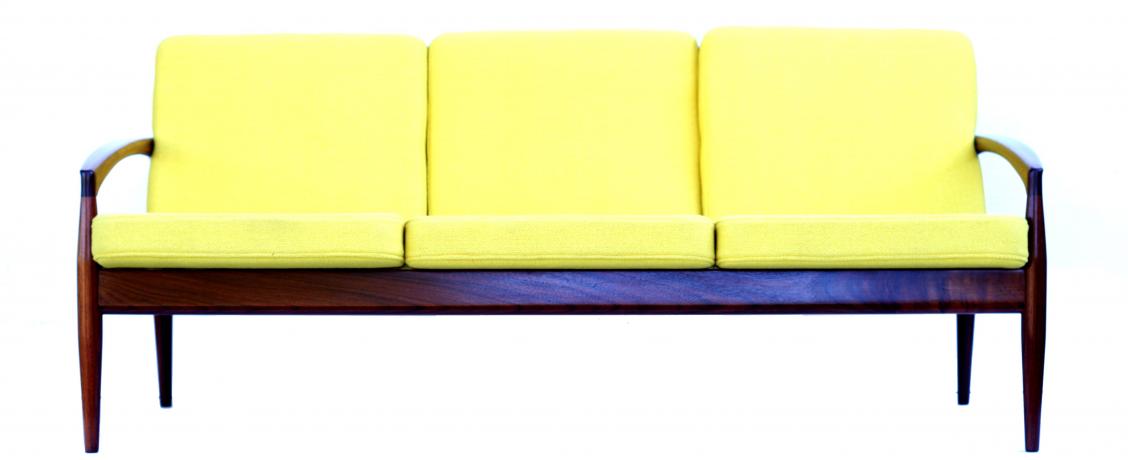Modern Classics the Danish Way
By Elizabeth Talbot
The company of Magnus Olesen was founded in 1937, built on a strong belief in Danish craftsmanship and encompassing the values of durability and quality, longevity and sustainability.
Ever since it was established, with its roots firmly in Danish Modern, Magnus Olesen has always worked with well-respected designers, such as Ib Kofod-Larsen, Rud Thygesen & Johnny Sørensen, Niels Gammelgaard and Busk + Hertzog; the firm is still very much in production and so more recent names include Strand+Hvass and SaysWho.
Magnus Olesen’s extensive portfolio of Danish classics as well as contemporary designs has grown over the decades and been derived from working with both designers and architects. This has always resulted in functional, aesthetic and unique elements that enhance the space the pieces inhabit, from small, intimate domestic interiors to large conceptual buildings.
One of the most significant designers who has collaborated with Magnus Olesen since the 1950’s is Kai Kristiansen. Kristiansen was born in 1929 and apprenticed in cabinetmaking before enrolling in the prestigious Royal Danish Academy of Fine Arts in Copenhagen under the highly influential designer Kaare Klint in 1948.
At the age of only 26, Kristiansen opened his own studio and began to create furniture in what would soon became known as the Danish Modern style. As well as Magnus Olesen, his designs have been produced by well-known Danish manufacturers, such as Feldballes Møbelfabrik, Fornem Møbelkunst, Fritz Hansen and Vildbjerg Møbelfabrik, and may well be familiar to many readers, even if the names behind them are not.
Kai Kristiansen furniture is the result of the aforementioned Danish tradition where quality, craftsmanship and attention to detail are the core values. The result is beautiful, elegant and, what’s more, ergonomic furniture produced in timeless designs, still in high demand well into the 21st Century. One of his most enduring ranges is called “Paper Knife”, an iconic series of lounge chairs, sofas and coffee tables originally produced by Magnus Olesen in the 1950s and 1960s under the name “model 121”. However, so enduring is the design, “Model 121” was relaunched by the Miyazaki chair factory in 2008 simply as “Paper Knife”.
Meanwhile, consigned to the Modern Design Sale at TW Gaze on Saturday 2 November is a “Paper Knife, model 121” lounge set, c. 1955, comprising a three seater settee and a pair of lounge chairs. The frame is solid Brazilian rosewood but is being sold with Cites article 10 certificates, so all is above board and proper in terms of the legalities; and it has been fully restored with new upholstery and foam so complies with the current fire safety standards as well.
Little realised or understood by most people, including certain commercial outlets of second-hand furniture, are the serious restrictions surrounding the re-sale of 20th Century furniture, which although iconic in design and manufacture, does not comply with legislation. Attention needs to be given to the age of a piece and whether it needs to bear labels referencing current fire retardant standards of both the upholstery and the filling; for example whilst reupholstered Victorian chair frames currently bypass the requirement to be labelled, upholstered pieces made between 1 January 1950 and 1989 which people see as “current” are often illegal to sell on these grounds. Likewise, the international governance for the preservation and conservation of endangered species of not only animals, but plants as well, means that woods such as Brazilian rosewood, much loved by 20th Century furniture designers, must be verified and certified ahead of a commercial transaction.
Whether one agrees with the well-intentioned jurisdiction or not (and there are certainly bizarre loopholes and practical inconsistencies to contend with) heavy penalties await those caught contravening the law. If in doubt, seek insight and guidance from a reputable specialist. True enthusiasts like James Bassam, TW Gaze’s long-standing and highly experienced Modern Design expert, will wish to help you reach the point where you can both sell correctly and buy with confidence. They want to ensure such wonderful items are marketable and sharable for generations to come, but legally and safely.
The result of the attention to detail for the sale of this suite is that it is “all ready to buy and install” and carries an estimate of £6,000 – 8,000. The guide is both attractive and competitive and would secure an amazing, work of long-lasting, functional art: plus, what price peace of mind?
The auction will contain several hundred pieces of Modern Design including glass, ceramics, paintings, fabrics and light fittings, not to mention other eye-catching furniture.
Viewing: Thursday 31 October, 2 -8pm, Friday 1 November 10am – 6pm and on the morning of sale from 8.30am.
Catalogues: twgaze.co.uk and live bidding platform saleroom.com
Further details and enquiries regarding future Modern Design sales j.bassam@twgaze.co.uk

